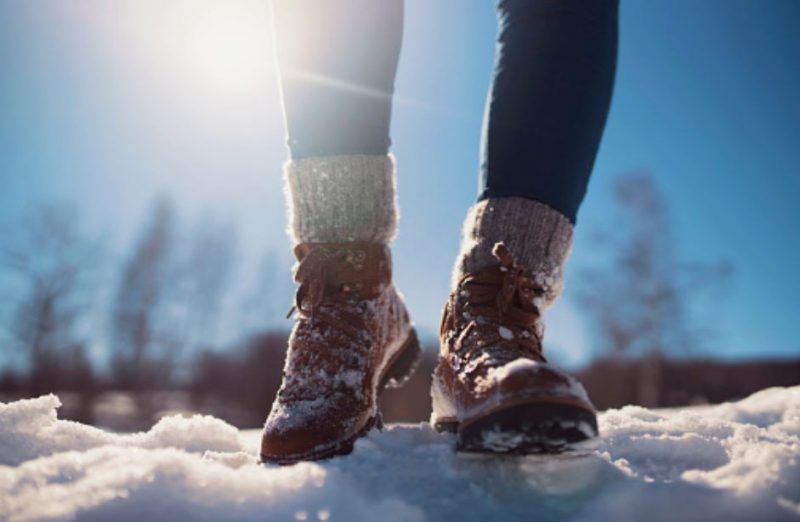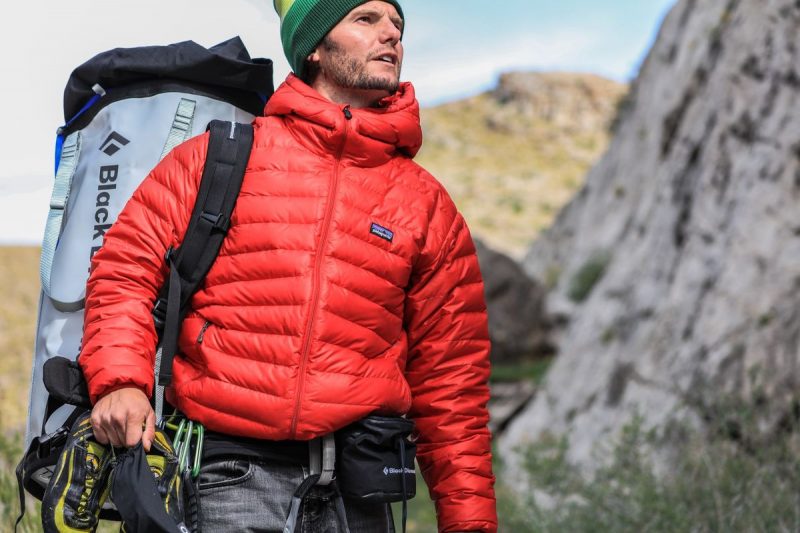Knowing what to pack on a trek is a skill. It’s the difference between a good trek and a bad one.
Some trekkers tend to overpack whereas some tend to under-pack. This is a guide to help you pack for your next trek in the Himalayas.
1. Rucksack/Backpack
When you are out there in the wild, your backpack will be your home. So invest in a good one! You need a sturdy bag with a capacity of around 60-70 liters. Make sure that it has a proper metal frame.
2. Trekking Shoes
A pair of good trekking shoes is a must. Shoes with ankle support and proper grip on the soles are recommended. Your feet will need all the comfort and durability they can get. Get waterproof-resistant shoes especially for treks in the monsoon and winter season.

3. Trekking Poles
Trekking poles can help you to save energy and prevent ankle sprains. If you suffer from knee problems then this could be additional support that helps you finish your trek.
4. Headlamp
You will need a headlamp for those late-night trips to the bathroom or after sundown. Especially on treks where you’re supposed to trek in the night. A headlamp is a must! Make sure that your batteries are fully charged before every trek.
5. Sunglasses
A pair of polarized sunglasses with UV ray protection is a must. On the trail, you’ll be exposed to harmful rays from snowfields and water bodies which can affect your eyes. Have you heard about Snow Blindness? If not, click here. If yes, then you know how important a pair of sunglasses is.
6. First Aid Kit
Get a good first aid kit. It should have a knee cap, bandage, painkillers, antiseptic cream/lotion, paracetamol, and other basic medicines. Our trek leaders and expedition leaders carry elaborate first-aid kits including oximeter and portable oxygen cylinders on the treks. But, we recommend that you carry a basic one.
7. Rain Gear (Upper & Lower)
You should get a proper rain jacket and waterproof pants for your trek. We don’t recommend Ponchos because they do not cover your arms and legs, and you may end up getting wet. Plus, it’s sometimes hard to trek with a poncho. On the other hand, Ponchos are cheaper and you don’t need to get a separate rain cover for your bag. That reminds me:
8. Rain Cover
If you’re not getting a poncho, you should get a rain cover for your backpack.
9. Day-Pack
If you plan to offload your bag, a day pack helps you carry your lunch, rain gear, and other things that you need during the trek. On some treks, you may need a backpack even if you’re not offloading, so read the itinerary carefully or confirm if you’ll need a day pack.
10. Camping Slippers
These are not mandatory but are recommended to make your life easy while camping on a trek. Personal experience – Crocs are the best for camping.
11. Sun Cap
A good trekking cap can protect your face from sunburn. You should always keep your head covered in the mountains because the sun’s intensity is even more compared to that of the plains. You can get a headache from the harsh sun or the harsh winds. So, keep a cap.
12. Woollen Cap
During the evenings and on winter treks, you will need a warm woolen cap. It should cover your ears properly.

13. Buff
A buff is a versatile piece of clothing. You can wear it around your neck, around your mouth, and in many other ways depending on the weather. It protects you from harsh winds. You can also use it as a headband or to cover your nose when the sun is harsh.
14. Thermals (Upper & Lower)
You never know when the weather may change drastically. Always carry thermals for winter treks. Go for synthetic material so it doesn’t soak up sweat.
15. T-Shirts
Don’t carry cotton T-Shirts. They soak up sweat, are heavy, and are harder to dry. Go for synthetic T-Shirts that wick moisture away from your body. Long-sleeve T-Shirts are the best.
16. Fleece Jacket
Fleece is lightweight, breathable, quick-dry, and warm. You can wear it during the day or in the evenings. It also serves as an additional layer of warmth under your down jacket or waterproof jacket.
17. Down Jacket
Down jackets are warm, lightweight, compressible, and long-lasting. They’re made from goose or duck feathers. There are two types of down jackets: synthetic and goose-down. The second one is warmer, but the first one is cheaper. Get the former if you are on a budget, otherwise get the latter. You can wear it at night when temperatures fall or when you need some extra warmth.

18. Waterproof Gloves
When trekking in the mountains, you will be exposed to harsh weather conditions which include strong winds, rainfall, or snowfall. It is better to take a pair of waterproof gloves to protect your hands and make it easier for you to use trekking poles.
19. Trek Pants
Trek pants will make your life much easier when you are on the trail. They are made from a quick-dry material so you can get away with wearing them even when it’s raining or snowing outside. NO JEANS PLEASE!
20. Socks
Always carry two pairs of socks for the trail and one warm woolen pair to keep you warm at night. Your trail socks should be quick-dry, synthetic and it’s best if they have anti-odor properties. You don’t want to make your tent-mates suffer, do you?
21. Water Bottle
Carry at least 2 bottles of 700ML on Himalayan Treks. If there’s enough water on the trail, you can fill both up to half, and balance your bag on both sides. If there’s no water on the trail, you can fill them up with boiled drinking water. You can also carry a Thermos Flask for winter treks.
22. Tiffin Box, Spoon & Mug
You will be provided food on treks and you’ll also need to pack your food for the longer days. We don’t like to use avoidable plastic/waste on our treks, so it’s best to bring a tiffin box, spoon, and mug for eating and carrying your food.
23. Sunscreen
Sunscreen creams are an absolute necessity, especially on treks. Wear it during the day and reapply it every three hours to save yourself from sunburn. SPF 30 or above is recommended.
24. Lipbalm
You don’t want a serious case of dry and chapped lips on your trek. Always carry a lip balm to keep your lips moisturized.
25. Personal Toiletries
Carry a small kit with your personal toiletries including toilet paper, toothbrush, toothpaste, etc. Do not carry perfumes on a trek.
26. Cameras/GoPro
It’s not mandatory, but a recommendation if you want to capture memories.
27. Power Bank
A power bank is heavyweight, but it can be helpful if you want to use your phone on the trek.
28. N-95 Masks & Sanitiser
The pandemic has made us all conscious of health and safety. Carry an N-95 mask & a small sanitizer to protect yourself and the local communities.
This site uses Akismet to reduce spam. Learn how your comment data is processed.
[…] Also Read: Things To Carry On A Himalayan Trek – Packing List […]
[…] You can read more about what to pack for a trek here. […]
[…] Frequently Asked Questions About Kedarkantha (Updated 2022) – Advenchar on Things To Carry On A Himalayan Trek – Packing List […]